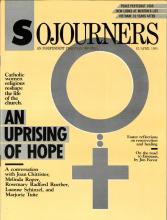This was now the third time that Jesus was revealed to the disciples after he was raised from the dead. When they had finished breakfast, Jesus said to Simon Peter, "Simon, son of John, do you love me more than these?" He said to him, "Yes, Lord; you know that I love you." He said to him, "Feed my lambs." A second time he said to him, "Simon, son of John, do you love me?" He said to him, "Yes, Lord; you know that I love you." He said to him, "Tend my sheep."
He said to him the third time, "Simon, son of John, do you love me?" Peter was grieved because he said to him a third time, "Do you love me?" And he said to him, "Lord, you know everything; you know that I love you."
Jesus said to him, "Feed my sheep. Truly, truly I say to you, when you were young, you girded yourself and walked where you would; but when you are old, you will stretch out your hands, and another will gird you and carry you where you do not wish to go." (This he said to show by what death he was to glorify God.)
And after this he said to him, "Follow me" (John 21:14-19).
Then Peter, filled with the Holy Spirit, said to them, "Rulers of the people and elders, if we are being examined today concerning a good deed done to a cripple, by what means this man has been healed, be it known to you all, and to all the people of Israel, that by the name of Jesus Christ of Nazareth, whom you crucified, whom God raised from the dead, by him this man is standing before you well" (Acts 4:8-10).
The resurrection is a reality that puts forward a choice—and guarantees the freedom to make it. A confrontation with the risen Lord may prompt nearly as many fears as it calms. The community of disciples is shaken to its roots as much by Easter as by Good Friday; the Living God asks them to begin again.
Read the Full Article

